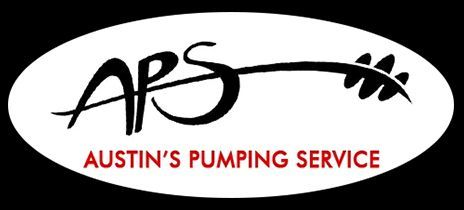FAQs
Austin's Pumping Service
How does my septic system work?
A septic system functions as a private wastewater treatment facility for your household. It receives waste from laundry, sinks, toilets, and other sources. Within the tank, bacteria decompose the waste, converting a significant portion into liquid. Indigestible matter settles as sludge at the bottom, while grease forms a scum layer on top. The liquid then flows through baffles into the drainfield, where it's absorbed and naturally purified by the soil. For maintenance or repairs, it's advisable to consult professional plumbing services to ensure your septic system operates efficiently.Why should I have my septic tank cleaned regularly?
Regular septic tank cleaning and inspection are crucial for maintaining optimal performance and extending the system's lifespan. This routine maintenance helps prevent issues such as slow-draining fixtures and septic backups in your home. Professional cleaning every two to three years can help manage sludge levels, preventing it from entering the drainfield and causing pipe or soil blockages. Regular maintenance also protects your home, prevents embarrassing sewage backups, avoids costly repairs, and maintains your property's appearance. For expert septic cleaning services, consider contacting Austin's Pumping Service.How often should my septic tank be cleaned?
The frequency of septic tank cleaning depends on various factors related to your household's usage. These include the number of occupants, garbage disposal use, system age, and frequency of guest visits. The United States Environmental Protection Agency recommends having septic systems inspected at least once every three years. Professional plumbing services can assess your system during inspection and provide a personalized cleaning schedule based on your specific usage patterns. It's important to note that frequent use of garbage disposals may increase sludge accumulation, potentially necessitating more frequent cleanings.What can I do to keep my system running well?
To maintain your septic system's efficiency, it's recommended to have the sludge pumped from your tank every two to three years. This helps prevent costly issues and maintain optimal performance. Avoid introducing harsh chemicals such as paint solvents, thinners, nail polish remover, bleach, and drain cleaners into the system, as these can harm the beneficial bacteria that break down waste. Refrain from flushing items like diapers, feminine products, cigarette butts, condoms, or cotton swabs, as they can cause blockages. Following these practices can help ensure your system operates efficiently and minimize the need for expensive repairs.What causes the thick crust (scum) in my tank?
The thick crust, or scum, in your septic tank is composed of organic material that has solidified. This condition may indicate a deficiency in bacterial activity. Applying a treatment such as Austin's Bio-Treatment can help increase the population of aerobic bacteria and enzymes, which aid in breaking down and liquefying this scum layer. Professional plumbing services often recommend such treatments to restore balance in septic systems and maintain efficient operation.What is a grease trap?
A grease trap is a specialized device connected to the outlet side of sinks and equipment drains. It consists of chambers or screens that slow wastewater flow, allowing fats, oils, and grease (FOG) to cool and rise to the surface while solids settle to the bottom. The remaining water then flows into the sewer system. There are two primary types: large outdoor underground interceptors typically made of concrete, and smaller indoor traps located near sinks or in floors. Professional plumbing services can assist with the installation and maintenance of both types to ensure efficient kitchen operations.What if I don't clean the trap regularly?
Neglecting regular cleaning of grease traps can lead to significant issues. Fats, oils, grease (FOG), and food solids may bypass the trap, solidify in sewer pipes, and cause major plumbing problems. These issues often result in costly repairs and business interruptions. Additionally, many local authorities impose fines for inadequate maintenance. To avoid these problems, it's advisable to engage professional plumbing services for regular grease trap cleaning.How is a grease trap cleaned?
The process of cleaning a grease trap involves removing all fats, oils, grease (FOG), water, and food solids. Screens are scraped and rinsed, and the trap's interior is thoroughly cleaned. The outlet box must be cleared of debris, after which the trap is refilled with water and tested for proper flow. The removed waste must be disposed of in compliance with regulations. Finally, the trap's exterior should be deodorized and cleaned. Professional plumbing services adhere to these steps to ensure grease traps function efficiently.Are fats, oils, and grease a problem?
Fats, oils, and grease (FOG) can indeed cause significant problems in sewer systems. They adhere to pipe interiors, restricting wastewater flow and potentially causing blockages that lead to sewer overflows. These issues often necessitate more frequent pipe cleaning and may accelerate the need for pipe replacement. Clogs and overflows can create unsanitary conditions that damage businesses, properties, and profits while also harming the environment. Professional plumbing services can help prevent these issues through regular maintenance and proper cleaning procedures.What types of products contain fats, oils, and/or grease (FOG)?
Common sources of fats, oils, and grease (FOG) include cooking oils, salad dressings, sandwich spreads, meat, lard, shortening, dairy products, sauces, and butter or margarine. Professional plumbing services often educate customers about identifying these products to prevent their introduction into drains and grease traps, thereby maintaining the efficiency of plumbing systems.



